There is no more classic test piece of Alaskan whitewater than the Devil’s Canyon of the Susitna River. As a part of the triple crown of class V big water expedition paddling, the Susitna has stood the test of time since its first descent, solo, by the legendary Walt Blackadar in 1972. Since then, the river has been descended numerous times, but it is still a rare event for the canyon to see a group of paddlers. I was super stoked to have the opportunity to paddle this storied river while spending the summer in Alaska.
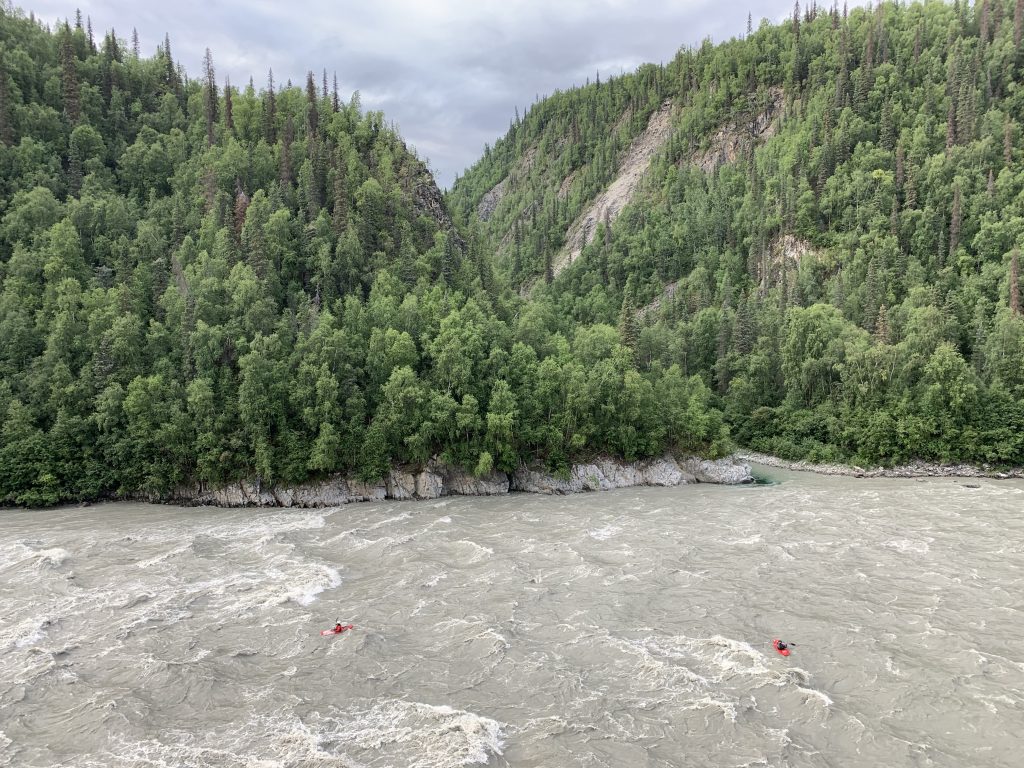
In July, the river levels started to drop into an ideal range and we quickly put together a plan. I was fortunate to link up with a great crew of paddlers, including my good friend Jay Mahan who I cut my creekin’ teeth alongside back in North Carolina. Along with Jay, we had Alaska (and Susitna) veterans, Eric Parker and Brendan Wells from the PNW (who shot a bunch of awesome footage we should be seeing before too long), Paul Ramseth, and Cole Moore. Jay has been working as a bush pilot in Alaska for the past several years and got us hooked up with a flight on a floatplane into an unnamed lake about 10 miles above Devil’s Creek. This destination marks the first rapid and entrance to the canyon.
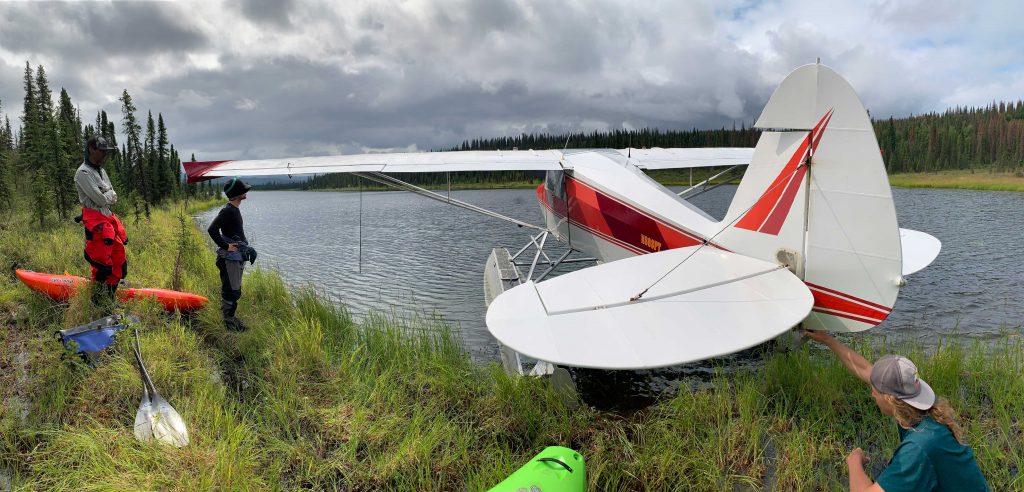
The flight up was spectacular. After taking off from a small floatplane dock in Talkeetna, we flew up the Talkeetna River before the view gave way to high elevation tundra, alpine lakes, a moose romping through a wetland, and peaks of the Alaska Range in the distance. As the Susitna River valley came into sight, so did a small alpine lake perched on the edge, several hundred feet above the river gorge. After touching down on the lake and floating to a stop against the far shore, we carefully unloaded the boats, snacked on some wild blueberries, and laid down for a tundra nap in the moss while we waited for the rest of the boys to arrive on the next flight.
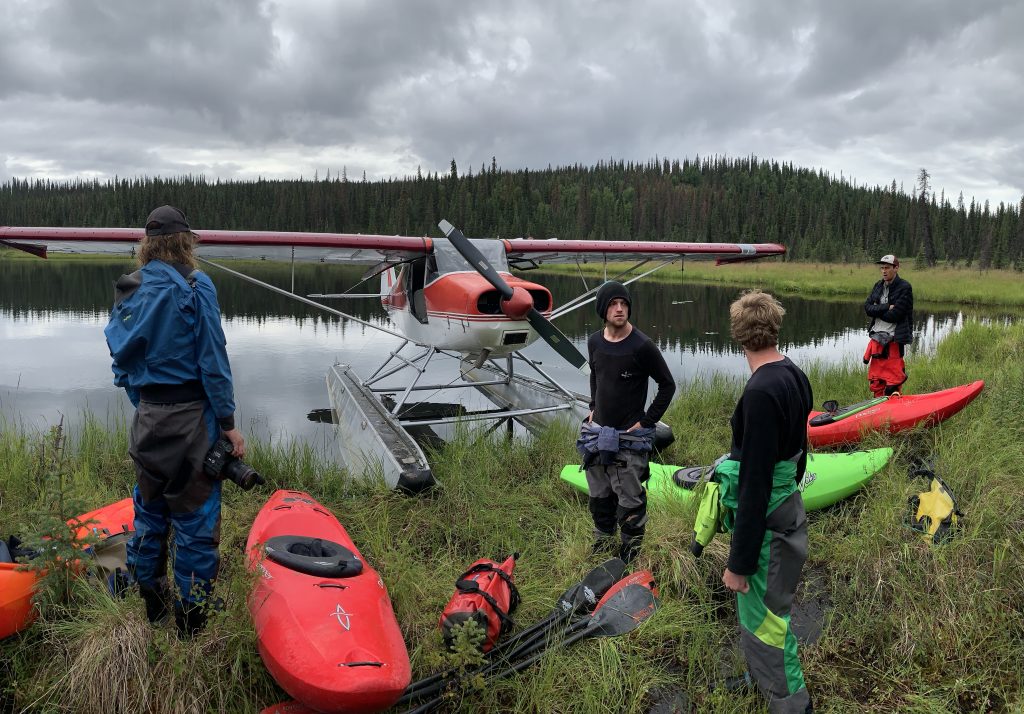
Once the rest of the crew showed up, we spent the next hour bushwhacking and tundra-boatin’ downhill to the banks of the mighty Susitna. It should be noted that while planning for the trip, flows looked to be in the ideal range of around 15,000 CFS and steady. However, the day before we flew out we found they had climbed to over 26,000 CFS – definitely on the higher side of how much water you want in there! It appeared flows were levelling out and should drop, and knowing a descent was still possible at high water, we elected to go ahead with the mission. Putting on the river, we had a quick 10 mile or so paddle until we reached Devil’s Creek Rapid, the biggest and most complex of the Canyon.
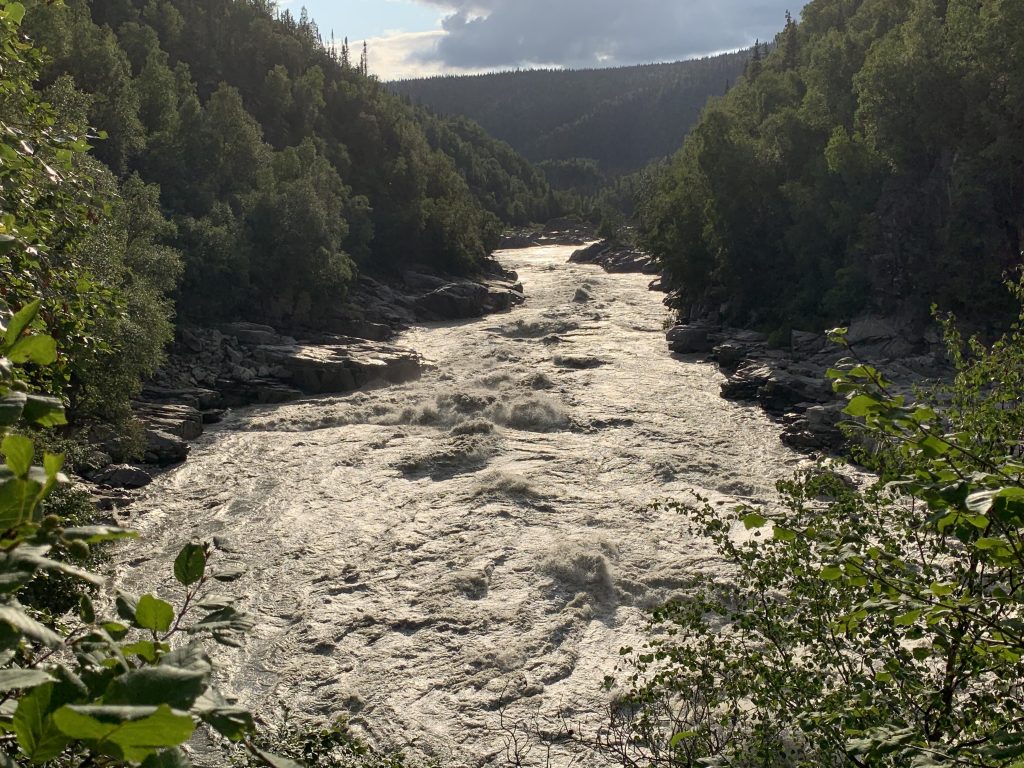
Scouting Devil’s Creek Rapid was one of the more intensive scouts I have ever been a part of. There is no one place you can see the entire rapid, but as we made our way downstream along the left bank, watching the previously wide Susitna begin to choke down all 26,300 CFS, you knew something significant was happening around the corner. The first vantage point was awe-inducing, but confidence-inspiring. An entrance of ledges and pourovers led into several mammoth, offset wave holes, the last one looking like it would pack a huge hit but let you through without too terrible of a beating. Getting stoked, we proceeded around the corner to see what the “runout” looked like. Turns out around the corner isn’t the run-out, its the 2nd half of the rapid that was as big, if not bigger, than what we had just scouted! And the punch-able wave hole would typewriter you left, directly into the biggest hole I have ever personally laid eyes on, that everyone pretty much agreed you didn’t have much chance of coming out of in your boat. That led into a several hundred-yard long massive wave train that led into the next rapid.
So, we had to do some re-evaluating of our lines through the entrance… Over the next hour, we contemplated every possible line choice, going back and forth over possibilities and every time finding something else wrong. What worked for the entrance would risk setting you up poorly for the runout, and where you wanted to be in the run-out was difficult to access from the entrance. The fact that we couldn’t see the whole rapid from one place meant having to remember key features and attempting to remember what was what from the different vantage points. At one point we considered camping out there for the night and hoping levels may drop overnight, providing new, better options.
Bouncing ideas off of each other, we finally found an option we all agreed could work, and not put ourselves at a level of risk we were not comfortable with. Cole and Paul probed it out first, and we ended up running a few variations of the same line, essentially catching a micro eddy above a rocky island in the center of the river and running a low volume boof, setting us up well away from the monster hole and allowing clean passage through to the right side of the river. It was one of the more creative line choices to solve a big problem, navigating a way downstream through an absolute monster of a rapid.
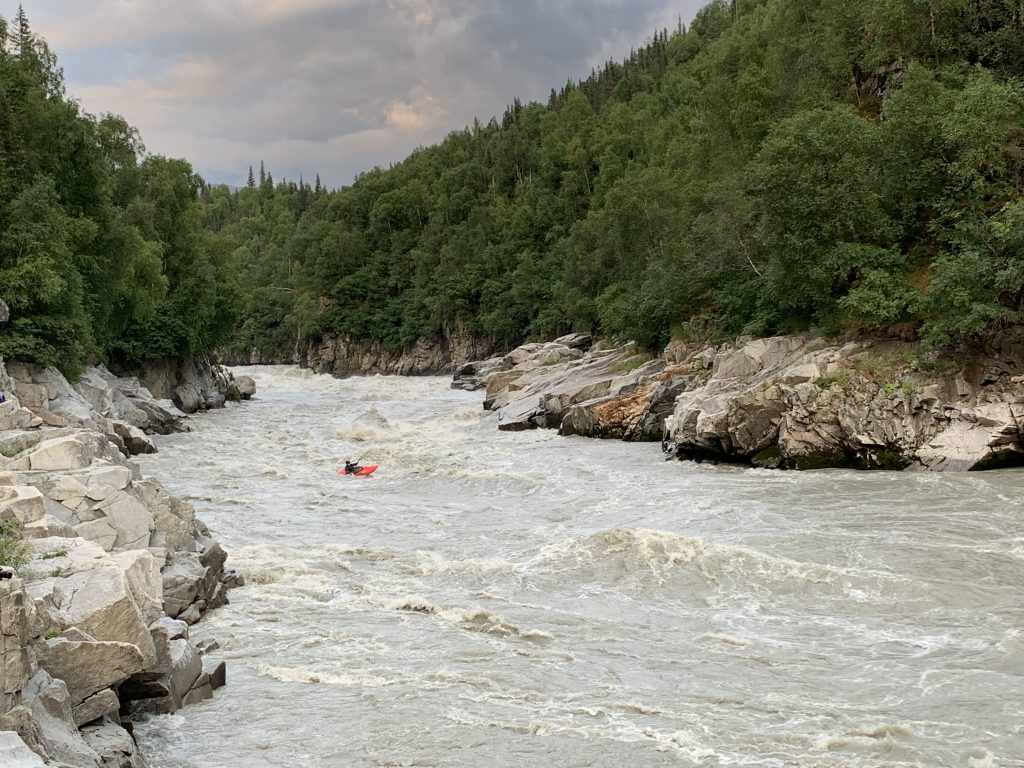
With the stress of the first and very formidable challenge behind us, a huge tension was lifted, we all routed the next huge wave hole followed by some whirlpools in a rapid called ‘The Nozzle’, and set up camp in a field of granite boulders on the side of the river. There is something to be said for overnighters in the wilderness that I can’t quite put into words. Cooking over a fire and sleeping on a granite boulder under the stars in a river gorge that is a real, real long way away from any road or anything at all in the middle of Alaska was a great feeling.
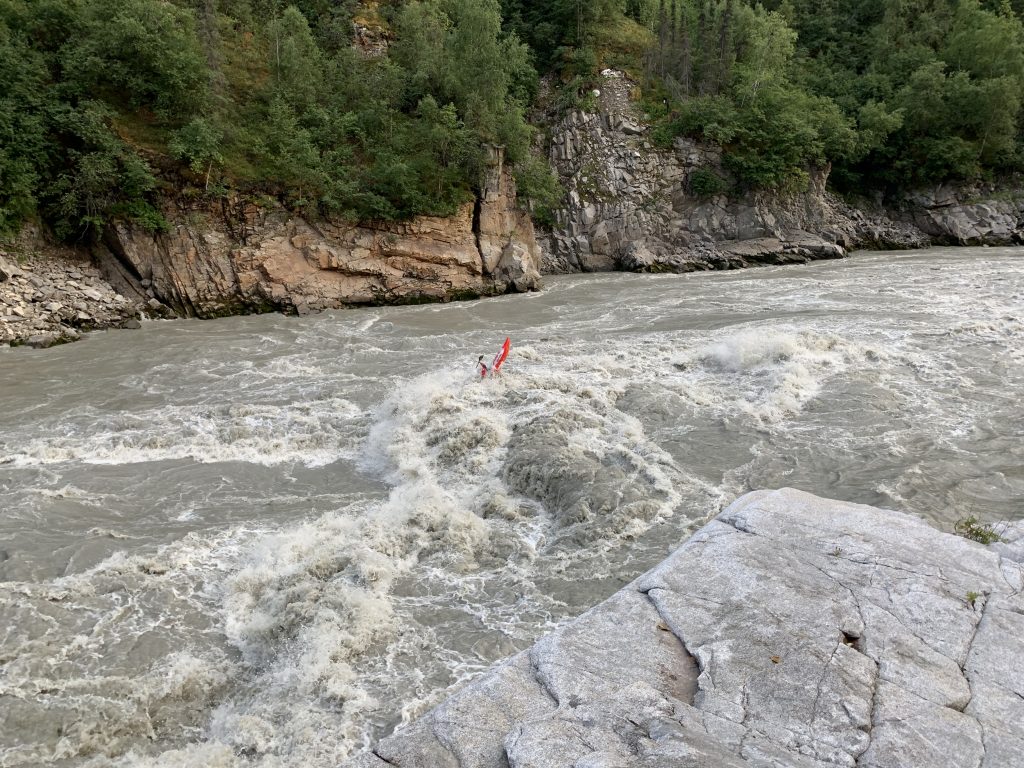
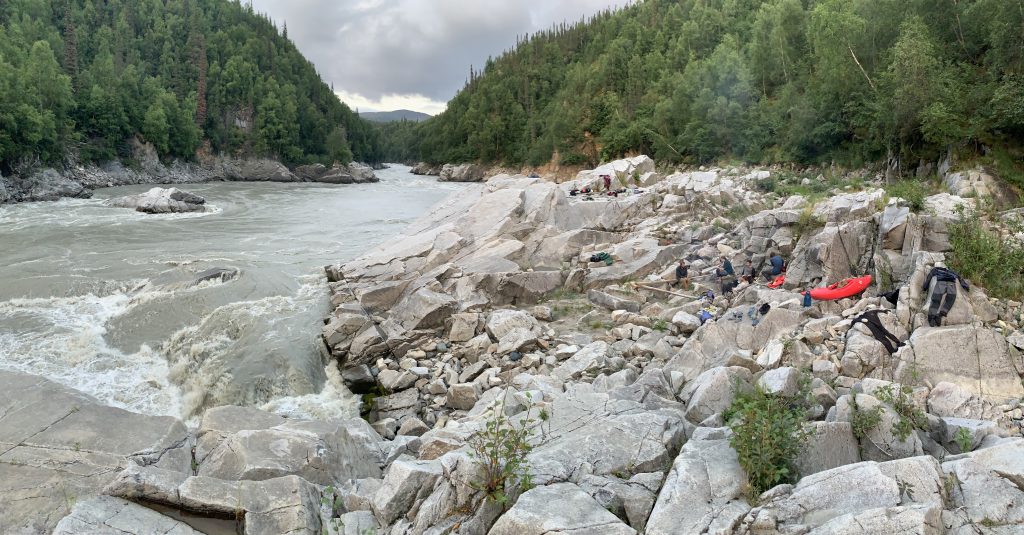
The next morning, we got right to work on trying to make progress downstream. We had lined up a ride out on the train from a bridge that would save us about a 40-mile flatwater paddle out down to Talkeetna, so we were pretty motivated to make it to the bridge in time. We had about 10 miles of the remainder of the Devil’s Canyon, and about a 10 mile run out to go. We put in and paddled about a 100-yard long wave train before getting out to scout Hotel Rock Rapid, probably the narrowest point in the gorge, where the river flows around and over a massive rock with a pretty significant vertical drop. Unfortunately, the water had not dropped quite as much as we had hoped overnight and Hotel Rock was creating a horrible pulsing hydraulic. There was a line, but every 20 seconds or so the curler folded over in itself and surged straight into the hole, that looked very unlikely to ever come out of. It was more of a gamble than anything else, so we elected to portage, which after roping the boats up a short cliff was relatively easy.
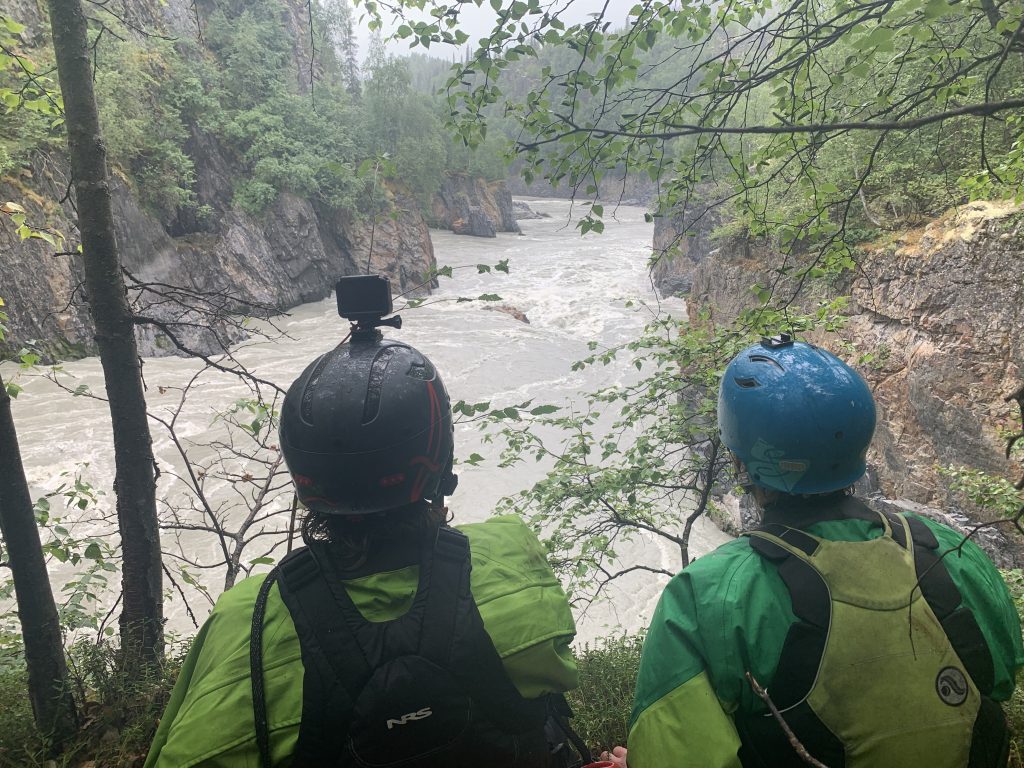
After the struggles of the massive scout, another big rapid, and a portage, it felt like we had done a ton of work and not a whole lot of kayaking, but that changed right around the corner. Just downstream was one of the best surf waves ever; an overhead, perfectly steep, green wave you could carve up for as long as you wanted, such a treat! Downstream from there were several miles of amazing class IV water, full of huge kickflip waves, and super fun lines down to the next named rapid, ‘Screaming Left’. After a quick scout, we fired this one up with clean lines all around and proceeded through some more quality boogie down to the last major rapid of the canyon, ‘The Pearly Gates’.
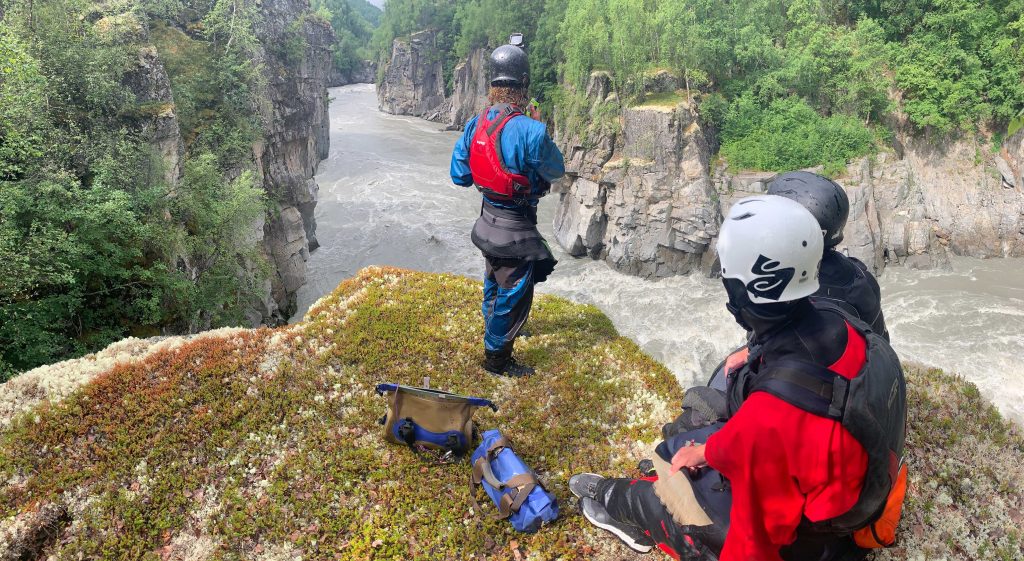
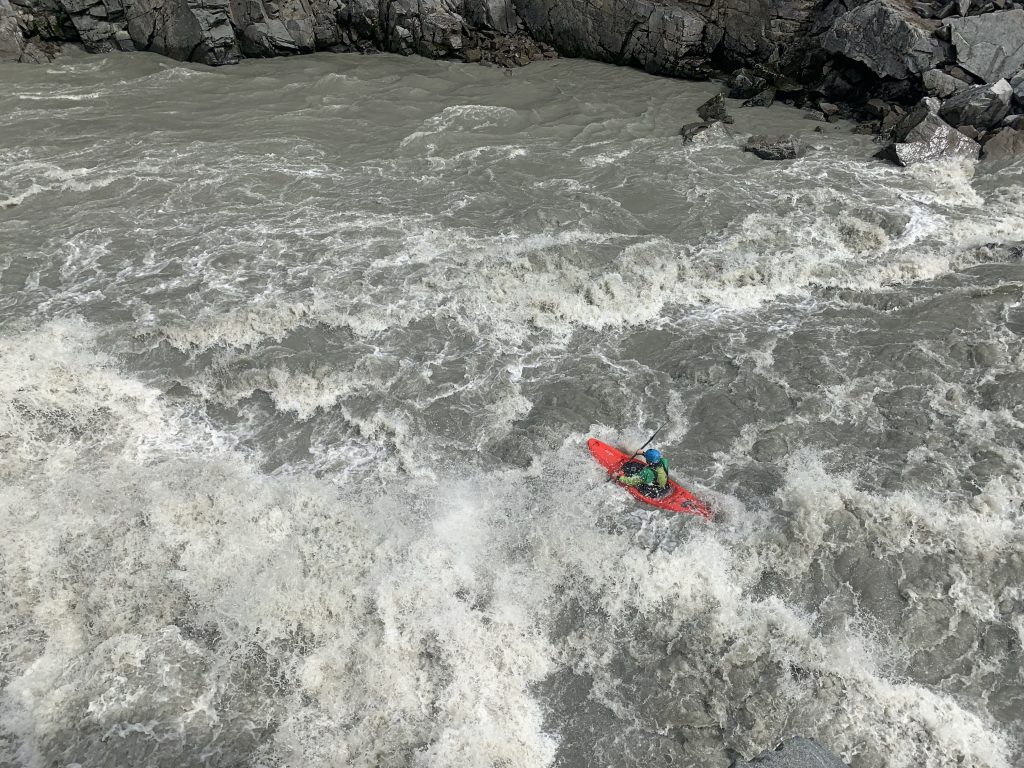
‘The Pearly Gates’ is nearly impossible to scout, with the vertical canyon walls not providing any real access downstream. We could see the entrance, and knew of several large holes, but weren’t quite sure of their exact location… I’m not sure how Walt Blackadar did it in the ’70s, but we opted to use technology to our advantage here. Brendan busted out the drone and flew it downstream as we all watched it realtime on his phone screen and were able to pick out a line that worked flawlessly! We also found out about a real big hole we were happy to know the exact whereabouts of. With The Pearly Gates behind us, we just had some more fun boogie to run out, and a big, flat water paddle down to the train bridge and we were done! We flagged down the train, loaded up the boats, and were back in Talkeetna by evening. My girlfriend, Kara picked us up at the train station with a cooler full of beverages (much appreciated!) and we went straight into Talkeetna to celebrate with some pizza!
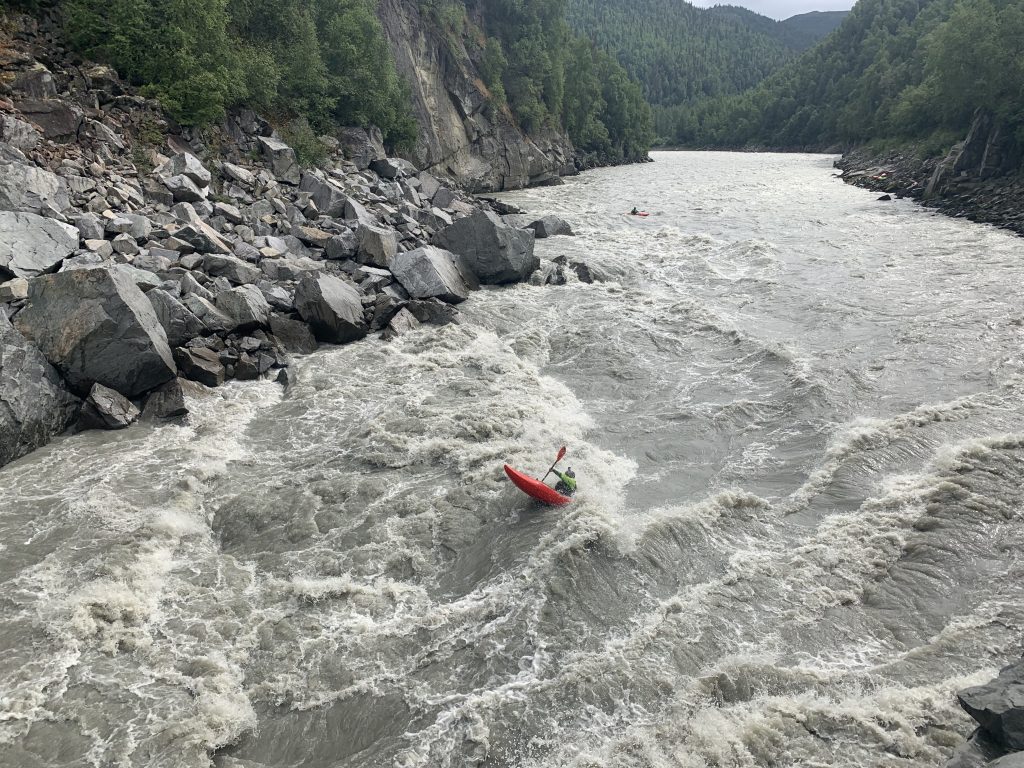
Overall, this was a trip for the books, and I’m so stoked we were able to make it happen. Huge thanks to Jay, Eric, Brendan, Cole, Paul, Kara, and our pilot!
Stay tuned to http://mountainmind.media in the near future; Eric and Brendan shot a lot of amazing footage on the trip and should have an edit up sometime soon!
– Clay




1 ping
Packrafting the Susitna and Talkeetna rivers, twice each! – Tom Diegel’s Gallivants (and Occasional Rants) says:
September 15, 2021 at 6:04 pm (UTC 1 )
[…] BIG whitewater. The Devil’s Canyon section of the Susitna is infamous as one of the more challenging big water runs in North America (I skimmed this; there’s a lot of “so stoked!”), and while the canyon section of the Talkeetna […]